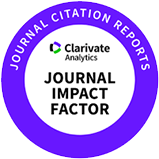Investigation of Microorganisms and Volatile Basic Nitrogen (VBN) in Beef and Suggestion for Potential Bacteria That Might Contribute to the Production of VBN with Metagenomic Analysis
Received: Sep 13, 2024 ; Revised: Dec 31, 2024 ; Accepted: Feb 18, 2025
Published Online: Feb 27, 2025
Abstract
This study investigated the prevalence of microorganisms related to meat quality and analyzed volatile basic nitrogen (VBN) levels in beef samples to suggest potential bacteria that might contribute to VBN production in current purchase stages with metagenomic analysis. Seventy beef samples were analyzed for coliform, Escherichia coli, enterohaemorrhagic E. coli, Listeria monocytogenes, Salmonella, Staphylococcus aureus,total aerobic bacteria (TAB), Enterobacteriaceae, lactic acid bacteria (LAB), Pseudomonas spp., yeast and molds (YM), and psychrotrophic bacteria (PB). VBN levels ranged from 0.69 to 22.51 mg%. Microbiota in three samples with the highest VBN levels and three samples with the lowest VBN levels were analyzed. S. aureus was detected in only one sample at 1.2 Log CFU/g. The cell counts for TAB, coliform, Enterobacteriaceae, LAB, Pseudomonas spp., YM, and PB were 5.1, 1.7, 2.6, 4.2, 1.9, 2.9, and 5.4 Log CFU/g, respectively. Microbiota analysis revealed that samples with high VBN levels had high relative abundances of Lactobacillus and Leuconostoc. This study showed that relatively abundant LAB were potential bacteria that might contribute to producing more VBN in beef at current purchase stages. However, the potential bacteria were suggested only by metagenomic analysis with a limited sample size without considering the endogenous meat enzymes. Therefore, further research is necessary to identify and isolate these bacteria with a larger sample size while excluding VBN produced by endogenous enzymes. Additionally, environmental factors not involved due to the limited objective of this study could also be considered in further research with the different objectives from this study.













